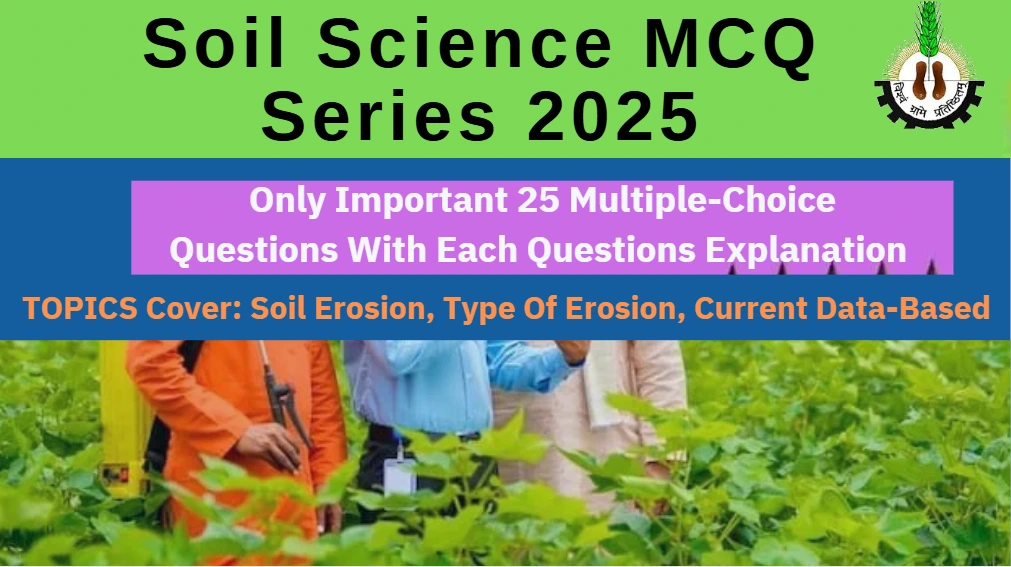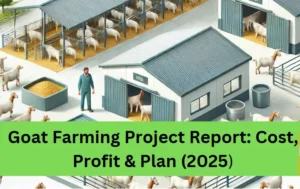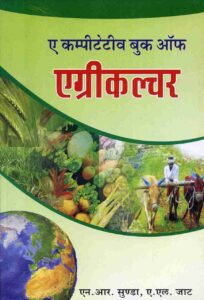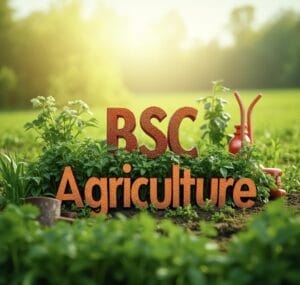Soil Erosion MCQs For Agricultural Exams
Soil erosion is a major environmental challenge that affects agricultural productivity, soil fertility, and water conservation. It is caused by wind, water, deforestation, and poor land management. Understanding types of soil erosion (sheet, rill, gully, wind erosion, etc.) and soil conservation practices is essential for agriculture students and competitive exam aspirants.
In this MCQ series, we provide 25 multiple-choice questions (MCQs) on soil erosion with detailed explanations. These questions will help you in IBPS AFO, NABARD Grade A, FCI, ICAR, and state agriculture exams. Let’s test your knowledge and learn the best methods to prevent soil degradation and improve sustainability in farming.

Soil Erosion MCQs PDF Download
1. Which erosion type forms small, linear channels called "rills"?
A) Wind erosion
B) Sheet erosion
C) Gully erosion
D) Splash erosion
📝 Additional Information
Rills are the initial stage of gully erosion, forming narrow channels 10-30cm deep when concentrated water flow cuts into bare soil. These temporary features appear after heavy rains on unprotected slopes. If unchecked, rills merge into permanent gullies. Farmers identify them by their finger-like patterns. Control methods include contour plowing (slowing water flow) and grassed waterways (stabilizing channels). The USDA considers rill formation a warning sign of accelerated erosion requiring immediate intervention.
Why not others?
A) Wind creates dunes, not channels
B) Sheet erosion removes uniform topsoil layers
D) Splash erosion only displaces surface particles

2. The Universal Soil Loss Equation estimates:
A) Nutrient loss
B) Annual soil loss (tons/acre)
C) Water pH changes
D) Crop yields
📝 Additional Information
Developed in 1965, USLE uses the formula A = R × K × L × S × C × P to predict long-term average soil loss. Factors include rainfall intensity (R), soil type (K), slope characteristics (LS), and land management (CP). This gold standard helps farmers and planners implement conservation measures. The updated RUSLE (1997) incorporates better climate data. For example, a field with a USLE value of 5 tons/acre/year exceeds tolerable limits.
Why not others?
A) Nutrient depletion requires soil testing for NPK levels and organic matter, which is not accounted for in USLE’s erosion-focused model.
C) Water infiltration is measured using infiltrometers and depends on soil texture, unrelated to USLE’s erosion prediction.

3. Which practice is MOST effective against wind erosion?
A) Contour plowing
B) Shelterbelts
C) Terracing
D) Cover cropping
📝 Additional Information
Shelterbelts (windbreaks) reduce wind speed by 50-80% through strategic tree/shrub rows. The USDA recommends perpendicular placement to prevailing winds, with 30-40% porosity for optimal protection. A well-designed shelterbelt protects areas 10-20 times its height downwind. The 1930s Dust Bowl response proved their effectiveness, with shelterbelts reducing soil loss by 60-80% in the Great Plains.
Why not others?
A) Contour plowing helps water erosion by slowing runoff on slopes but does little against wind.
C) Terracing is designed for steep slopes to control water flow, not wind patterns.
D) Cover crops help but are less effective than physical barriers during high winds.
4. "Raindrop impact" causes which erosion type?
A) Sheet erosion
B) Gully erosion
C) Splash erosion
D) Tunnel erosion
📝 Additional Information
Splash erosion occurs when raindrops hit bare soil at speeds up to 32 km/h, dislodging particles and creating micro-craters. A single storm can displace 2-5 tons of soil per hectare through splash alone. This initial erosion paves the way for more severe forms. Studies show that canopy covers reduce splash impact by 90% through interception.
Why not others?
A) Sheet erosion follows splash erosion when water flows uniformly across surfaces.
B) Gully erosion requires concentrated water flow, not just raindrop energy.
D) Tunnel erosion occurs underground through subsoil piping, unrelated to surface impacts.
Related soil science MCQ
5. The Dust Bowl (1930s) was primarily caused by:
A) Overgrazing + drought
B) Excessive irrigation
C) Volcano eruptions
D) Deforestation
📝 Additional Information
The 1930s Dust Bowl resulted from converting native grasslands to wheat fields, removing 90% of deep-rooted prairie grasses. Combined with a decade-long drought, this left soils exposed. Windstorms lifted an estimated 850 million tons of topsoil, some reaching the Atlantic Ocean. The disaster prompted modern soil conservation programs.
Why not others?
B) Irrigation was minimal in 1930s Plains agriculture.
C) Volcanoes didn’t affect North America during this period.
D) Deforestation occurred earlier; the Plains were naturally grassland.
6. Which soil type is MOST vulnerable to erosion?
A) Clay soil
B) Sandy soil
C) Loamy soil
D) Peaty soil
📝 Additional Information
Sandy soils are erosion’s worst nightmare because those loose, gritty particles just don’t stick together well. When rain or wind blows, the sand grains easily get carried away. It’s like trying to build a sandcastle near the ocean – the waves don’t even need to be strong to wash it away. Farmers often call sandy soils “hungry soils” because they quickly lose dirt and nutrients. The solution? Adding lots of organic matter helps glue those particles together better.
Why not others?
A) Clay soil sticks together like dough – those tiny particles cling tightly, making erosion much harder.
C) Loamy soil has the perfect mix – sand for drainage, clay for stickiness, and silt for balance.
D) Peaty soil is like a sponge – lightweight but fibrous enough to resist washing or blowing away.
7. What is ‘contour plowing’?
A) Plowing parallel to land slopes
B) Plowing in a circular motion
C) Deep plowing for water conservation
D) Plowing in straight rows
📝 Additional Information
Contour plowing means plowing across the slope rather than up and down.
It slows down water runoff and reduces soil erosion on hilly lands.
It is widely practiced in rainfed agricultural areas.
📌 Key Takeaway:
Contour plowing reduces soil erosion by up to 50% and improves water retention.
8. Which type of erosion is mainly caused by wind in dry regions?
A) Splash erosion
B) Wind erosion
C) Water erosion
D) Chemical erosion
📝 Additional Information
Wind erosion occurs in dry, sandy regions like Rajasthan and Gujarat.
It removes topsoil and valuable nutrients, leading to land degradation.
Water erosion is caused by rainfall, while chemical erosion happens due to soil acidification.
9. Which soil conservation method involves planting crops between rows of trees?
A) Mulching
B) Alley Cropping
C) Shifting Cultivation
D) Zero Tillage
📝 Additional Information
Alley cropping is an agroforestry technique where crops grow between rows of trees.
It protects soil from erosion and improves fertility by fixing nitrogen.
- Alley cropping is practiced in sustainable agriculture systems for soil conservation.
10. What is the primary role of vegetation in preventing soil erosion?
A) Absorbing excess water
B) Holding soil particles together
C) Reducing soil fertility
D) Increasing soil compaction
📝 Additional Information
Alley cropping is an agroforestry technique where crops grow between rows of trees.
It protects soil from erosion and improves fertility by fixing nitrogen.
- Alley cropping is practiced in sustainable agriculture systems for soil conservation.
11. Which of the following human activities accelerates soil erosion the most?
A) Use of organic fertilizers
B) Deforestation
C) Crop rotation
D) Afforestation
📝 Additional Information
Deforestation is one of the leading causes of soil erosion because trees play a crucial role in holding soil with their roots.
When forests are cut down for urbanization, agriculture, or industry, the soil becomes loose and vulnerable to erosion by wind and water.
Afforestation (planting trees) helps prevent erosion, while organic fertilizers and crop rotation improve soil fertility but do not cause erosion.
12. What is the primary reason why hilly areas are more prone to soil erosion?
A) Heavy rainfall and steep slopes
B) Low vegetation cover
C) Lack of human activity
D) High soil fertility
📝 Additional Information
In hilly regions, rainwater flows down at high speed, washing away the topsoil.
Steep slopes prevent water from being absorbed into the soil, increasing erosion.
Low vegetation cover worsens the problem, but the main cause is gravity-driven water runoff.
13. Which farming practice is most effective in reducing soil erosion in flood-prone areas?
A) Shifting cultivation
B) Zero tillage
C) Cover cropping
D) Slash-and-burn agriculture
📝 Additional Information
Cover cropping means growing plants like legumes and grasses to protect soil from rain impact and water runoff.
This method reduces flood damage and improves soil structure.
Zero tillage reduces soil disturbance, but cover crops provide better erosion control.
14. What is the main disadvantage of soil erosion for farmers?
A) Loss of soil fertility
B) Increased soil moisture
C) Better drainage
D) Stronger root development
📝 Additional Information
The topsoil layer contains most of the nutrients and organic matter necessary for plant growth.
Erosion washes away this fertile layer, leaving infertile subsoil, which reduces crop yield.
Soil moisture actually decreases, and poor drainage issues arise due to compacted subsoil.
15. What is the role of earthworms in reducing soil erosion?
A) They break down organic matter
B) They increase soil aeration and structure
C) They eat plant roots
D) They compact the soil
📝 Additional Information
Earthworms create tunnels in the soil, which improves water absorption and reduces runoff.
Their activities make soil more porous and stable, helping to prevent erosion.
They do not compact the soil or damage plant roots but rather improve soil fertility.
16. Which of the following is an example of chemical erosion?
A) Wind erosion
B) Sheet erosion
C) Acid rain dissolving soil minerals
D) Riverbank erosion
📝 Additional Information
Chemical erosion occurs when soil minerals dissolve due to acids, making soil weak.
Acid rain (caused by pollution) speeds up this process, breaking down limestone and other minerals.
Wind and riverbank erosion are physical processes, not chemical.
17. Which type of erosion is most common in coastal areas?
A) Rill erosion
B) Gully erosion
C) Wave erosion
D) Deflation
📝 Additional Information
Coastal areas experience wave erosion, where sea waves wash away beach sand and coastal soil.
It causes land loss, saltwater intrusion, and habitat destruction.
Deflation (wind erosion) occurs in deserts, not coastal areas.
Upcoming agriculture exams 2025
18. What is ‘Biological Soil Conservation’?
A) Using live plants to prevent erosion
B) Adding chemicals to stabilize soil
C) Building check dams
D) Plowing deeper to prevent erosion
📝 Additional Information
Biological soil conservation includes planting grasses, shrubs, and trees to bind soil and prevent erosion.
It is eco-friendly and cost-effective.
Check dams are a mechanical method.
19. How do river embankments help in soil conservation?
A) They stop river water from reaching crops
B) They prevent flooding and soil erosion
C) They help increase soil salinity
D) They promote soil cracking
📝 Additional Information
Embankments are raised structures built along rivers to prevent floodwaters from washing away soil.
They reduce erosion in flood-prone areas like Bihar and West Bengal.
📌 Key Takeaway:
The Kosi embankment in Bihar is a key example of soil conservation through river management.
5. The Dust Bowl (1930s) was primarily caused by:
A) Overgrazing + drought
B) Excessive irrigation
C) Volcano eruptions
D) Deforestation
20. What is ‘agroforestry,’ and how does it prevent soil erosion?
A) Growing trees and crops together
B) Using chemical pesticides
C) Planting only one type of crop
D) Plowing land without rest periods
📝 Additional Information
Agroforestry combines trees and crops to protect soil, improve fertility, and conserve moisture.
Trees reduce wind speed and hold soil with their roots, preventing erosion.
Monocropping and pesticides degrade soil health instead of protecting it.
21. What is the most effective method to control wind erosion in dry and arid regions?
A) Contour plowing
B) Mulching
C) Shelterbelts and windbreaks
D) Flood irrigation
📝 Additional Information
In dry and arid regions, strong winds carry away loose soil particles, leading to wind erosion (common in Rajasthan and Gujarat).
Shelterbelts and windbreaks are rows of trees or shrubs planted along fields to reduce wind speed, preventing soil from being blown away.
Contour plowing is used on slopes, while mulching helps in moisture retention, not wind control.
Flood irrigation can worsen soil erosion by washing away the topsoil.
22. What is sheet erosion, and how does it differ from rill erosion?
A) Sheet erosion removes the entire topsoil layer evenly
B) Rill erosion forms small channels, while sheet erosion does not
C) Both A and B
D) Neither A nor B
📝 Additional Information
Sheet erosion occurs when a thin layer of topsoil is washed away uniformly by rainfall or irrigation water, making it difficult to detect.
Rill erosion, on the other hand, creates small channels (rills) where water flows.
Both types of erosion are caused by surface runoff, but rill erosion is more visible and severe.
23. Why is soil erosion more severe in monocropping systems?
A) Because the same crop is grown continuously, depleting soil nutrients
B) Because it requires more irrigation, leading to runoff
C) Because there is no crop rotation to improve soil structure
D) All of the above
📝 Additional Information
Monocropping (growing the same crop repeatedly on the same land) reduces soil fertility and weakens its structure, making it prone to erosion.
Heavy irrigation in monocropping leads to more runoff, increasing the risk of water erosion.
Lack of crop rotation means there is no variation in root systems, which weakens the soil’s stability.
24. How do terracing and contour farming help in soil conservation?
A) They increase water infiltration and reduce runoff
B) They accelerate soil erosion by disturbing the land
C) They prevent root growth by compacting soil
D) They increase soil salinity
📝 Additional Information
Terracing is a method where land is converted into step-like structures to slow down water flow on slopes, preventing erosion.
Contour farming involves plowing along natural elevation lines to trap water and increase soil moisture.
These techniques reduce water runoff, which in turn prevents soil loss.
25. What is gully erosion, and why is it dangerous for agriculture?
A) It creates deep channels in the soil, making land unfit for farming
B) It improves soil fertility by increasing organic matter
C) It promotes plant growth by increasing water absorption
D) It strengthens soil by compacting it
📝 Additional Information
Gully erosion occurs when running water cuts deep trenches (gullies) into the land, making it impossible for farmers to use the land for cultivation.
This erosion is common in Madhya Pradesh and Uttar Pradesh, where badland formation occurs due to excessive soil loss.
Unlike other types of erosion, gully erosion permanently damages the land unless proper soil conservation methods are applied.
Related post-
📚 Cotton Corporation of India syllabus 2025 Notification out for 147 post
“Are you preparing for the Cotton Corporation of India (CCI)...
Read More📋 MPPSC Food Safety Officer Syllabus 2025| Notification Out for 67 Posts
The MPPSC announced 67 vacancies for Food Safety Officers. Suppose...
Read More🐐 Goat Farming Project Report 2025 – Practical Updates Every New Farmer Must Know (Cost, Profit Analysis)
If you’re searching for a low-investment, high-return agribusiness, goat farming...
Read More🌾 Nem Raj Sunda Book Hindi PDF – Free Download for Agriculture Competitive Exams
Nemraj Sunda book in hindi PDF Are you preparing for...
Read MoreZero Budget Natural Farming 2025: Real Story of a BSc Agri Student Who Said No to Job
1. Introduction: Zero Budget Natural Farming in 2025—A true success...
Read MoreWhat is bsc agriculture
BSc Agriculture means bachelor of science and birthplace of India...
Read More





